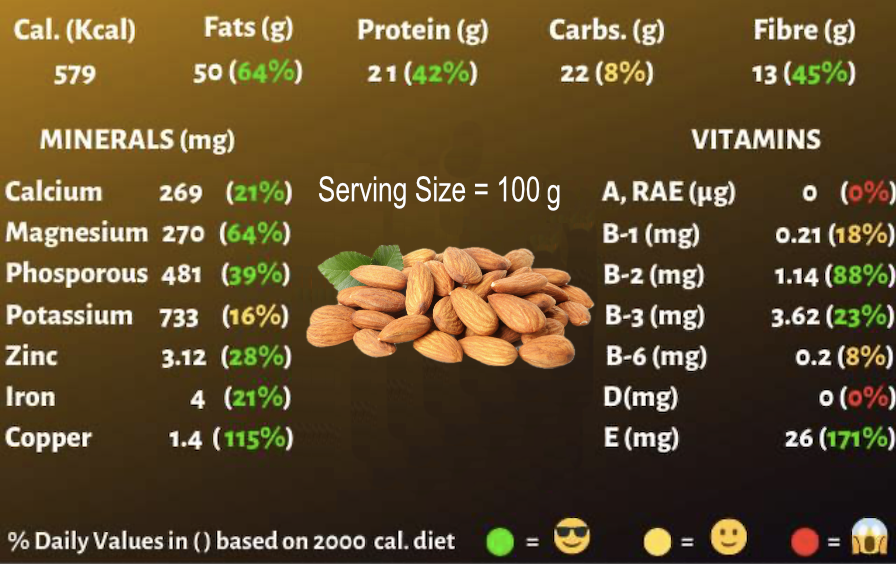
Yemetz Farms are Californian Almonds
We are Yemetz Farms & we produce & deliver succulent and tasty almonds!

Yemetz Farms are Californian Almonds
We are Yemetz Farms & we produce & deliver succulent and tasty almonds!
Good news about fat: U.S. Dietary Guidelines recommend that the majority of your fat intake be unsaturated. One serving of almonds (28g) has 13g of unsaturated fat and only 1g of saturated fat.
Almonds’ way-above-average vitamin E content makes them an antioxidant powerhouse. Just one ounce of almonds contains 50% of the Daily Value for vitamin E. Specifically, the natural form of vitamin E in almonds is known as d-alpha-tocopherol, which is more potent than the synthetic forms of vitamin E that you’ll find in dietary supplements. In the body, vitamin E helps protect cells from the damaging effects of free radicals, caused by pollution, UV rays from the sun, cigarette smoke and other environmental and intrinsic factors.

An almond nutrition discussion wouldn’t be complete without talking fiber. Almonds contain both soluble and insoluble fiber. Its insoluble fiber adds bulk to your diet, helping move things along your digestive tract. Soluble fiber can help lower LDL (bad) cholesterol and control blood sugar levels. Both types of fiber have been shown to be helpful in weight maintenance, too, helping you feel full, so you eat less and stay satisfied longer. One ounce of almonds has 4 grams of filling fiber, which will keep you feeling satiated for longer after snacking. Contrary to popular belief, not all the fiber in almonds is in the skin. In fact, 1 oz. of blanched almonds still contains 3 grams of fiber even without the skin.

The 6 grams of energizing almond protein packed into every ounce of almonds provides fuel for your body to help you tackle whatever the day throws at you. As a plant-based protein, almonds are also low in saturated fat and may help maintain healthy cholesterol levels as part of a heart-healthy diet.2 In fact, almonds are a deliciously indispensable part of plant-based diets – or any diet, for that matter.
Magnesium is a nutrient with many jobs in the body – regulating nerve and muscle function, keeping blood sugar and blood pressure levels steady, and helping to make protein, energy, bone and DNA in the body. That’s a lot of jobs for just one nutrient. Almonds are one of the best food sources of magnesium, offering 20% of the Daily Value in a one-ounce handful. Research continues to look into the beneficial role of magnesium in high blood pressure and heart disease, diabetes and osteoporosis. Although some research has investigated the effect of magnesium on sleep, anxiety and depression, results have not been conclusive and more study is needed.
The Unites States produces over 80% of the world's almonds and nearly all of those almonds are grown in California. And in California, there are over 30 different varieties of almonds grown in Californian orchards. That's right, over 30! Each variety has it's own unique combination of shape, sizes, color, crunch, and flavor.
Almond flavors vary. Nonpareils tend to be sweeter than all other varieties but have a mild "almond" flavor. That's why Yemetz Farms prefers Nonpareil almonds; we look for the sweetest tasting batch that holds a strong crunch.
Take a look at these chart below to learn more about the more common almond varieties found in Yemetz Farm orchards. They explain a little more about their shapes, their colors, and typical sizes. Sizes are based on how many almond kernels can be counted in an ounce. The larger the almond, the fewer the count per ounce.

Just remember 1-2-3. 1 ounce of almonds, or 23 almonds, is the ideal daily portion recommended in the Dietary Guidelines for Americans. Almonds are an easy, tasty, on-the-go snack that delivers the nutrition your clients need and the crunch they crave. So how can you make sure they’re getting the perfect portion? Here are some simple tips to measure the perfect portion every time:
